Insight on political parties giving cash to voters, the power of ideas in Indian elections and why women vote the way they do in part two of Betwa Sharma speaking with Rukmini S.
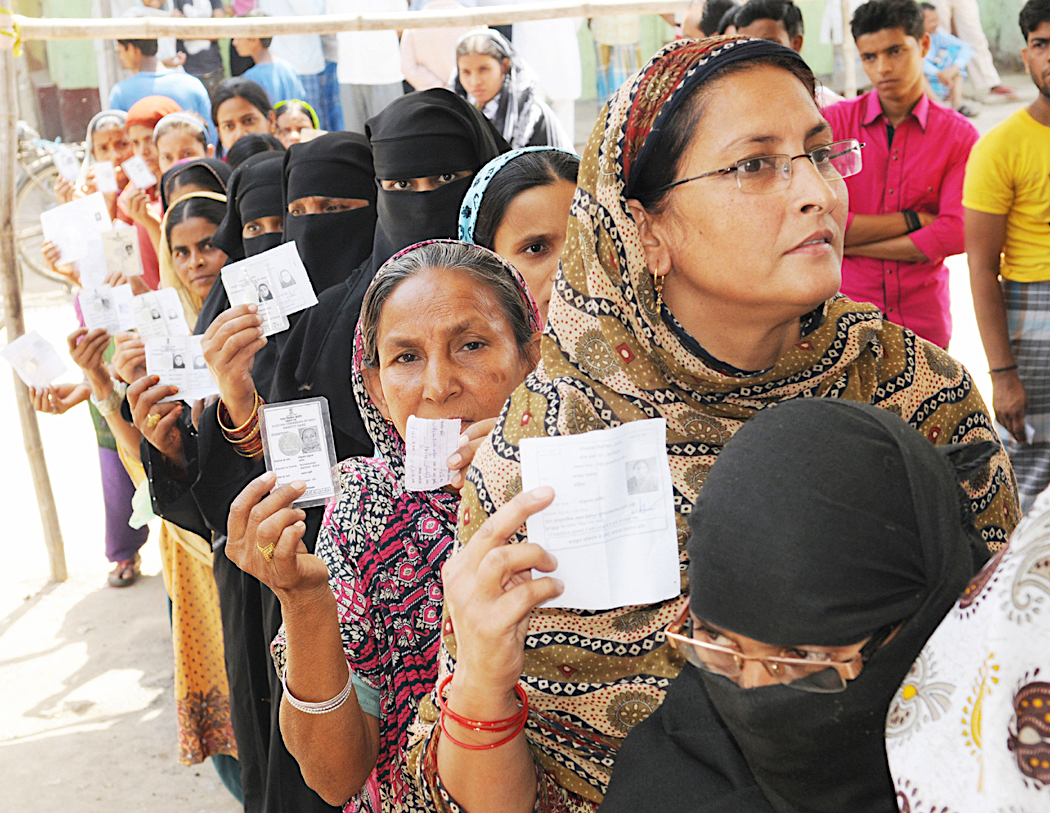
Women voting in 2014 general election in Patna Sahib, Bihar. (Election Commission, Government of India)
By Betwa Sharma
in Delhi
Special to Consortium News

In this second part of a two-part interview with data journalist Rukmini S on how India thinks, feels and votes, the author of Whole Numbers And Half Truths: What Data Can and Cannot Tell Us About Modern India explains:
- how for the first time in history, in the 2019 election, more Indian women than men voted;
- the ghettoisation of politicians from marginalised castes, and
- why the Hindu upper castes should be viewed as the actual “vote bank” (a term used pejoratively for Indian Muslims), since they are implacably loyal to the Hindu nationalist Bharatiya Janata Party (BJP).
You write that one must accept that Indians care about ideas, and that elections are fought over ideas—things like identity, not jobs.
I do see identity as part of the matrix of ideas. I think there isn’t enough scholarship around voting around identity. I think that’s a problem. One of the liberal fond hopes is that people are voting in a post-caste society where things like caste identity no longer matter to them, and all that matters to them are jobs and services.
The data has never borne this out, and I don’t think anecdotal evidence suggests that either. But when we talk about things like support for a particular individual or a party or issues of identity, we often see, at least in the popular media, these being almost used pejoratively.
I don’t think people fully understand what identity means, especially the assertion of identity historically and currently of marginalised communities. To assume that voting along caste lines, for example, is an idea-free, herd mentality sort of behaviour is to dismiss the universe of ideas behind this completely.
I think political parties understand this perfectly well, which is why they are in great sync with voters, where the conversation is about ideas. Whether we like some of the ideas or not is a different question. But this notion of the Indian voter as either some sort of lofty being who only cares about purely neutral public economic goods or the idea of the Indian voter almost being seen as “primitive” and driven by identity is disrespectful and essentially misses the entire dialogue that is happening between political parties and voters.
Are religion and nationalism two of the ideas?
Let me give you an example that isn’t about religion and nationalism because I do think that sometimes what is seen as national issues or at least issues that are extremely important in Delhi or north India tend to dominate the discussion, while at the regional and state level these might be quite far from the key issues.
In the chapter in the book, I talked to two women before the state election in Tamil Nadu. As I mentioned, both of them had taken money from the political parties they intended to vote for. In the popular narrative or an opinion poll, this would have been reduced to be seen as votes for money. I don’t think we are always able to explain these ideas perfectly, particularly in political science language.
One of the women told me that she was voting for one party because she believed that the leader of that party was a woman who had succeeded in a man’s world. It was a feminist belief that she was espousing and perhaps even a feminist vote. Sometimes, these things get reduced to cult followers or cult of personality, and we don’t elevate Indian voters’ ideas to the level of political science. We reduce them or dismiss them.
Her neighbour, who had also taken the money and was going to vote for the opposing party, saw her vote as an anti-BJP vote because she saw the BJP as a non-Indian, Hindi-speaking, upper caste party. That in itself is an assertion of backward caste identity or perhaps language identity, all of which are complex and interesting ideas based on which I believe most elections are fought.
Political parties do not see cash as a pathway to victory, but they see giving cash as necessary to be taken seriously, now that the norm has been set, you write. What does this say about the popular notion of politicians distributing money and cash the night before voting and people changing who they vote for?
This belief would boil down to a numerical assignment—the person who gives the most money, the vote goes to them. Anecdotally, we know that this is not the case. You can regularly speak with people on the election trail who will tell you how much they got from each party but who they voted for is not necessarily the person who offered them the most.
You don’t go around giving cash to everyone to see if the act of you handing out cash, swings the vote. Typically what political parties do is give cash to their own vote base and it’s almost sort of a membership fee in a reverse sort of way.
At the ground level, cash disbursement is quite different from how people believe it to be in the popular imagination. I think that evidence has converged quite well around the idea that a damaging norm — no doubt, damaging to democracy — has been set that voters have to be given some money before the election to show up to the booth. But vote buying in that respect is understood in a slightly comical and ham-handed manner, which field party workers can explain in a much better way.
You write that there is a Muslim “vote bank”, but if there is a truly loyal vote bank in India, it is BJP’s upper caste Hindu vote bank. Could you explain that?
The notion of a vote bank typically is a group that, come what may, its loyalty is pre-known, preset, pre-decided, and within that group, voting is homogenous for that particular party. This term is most often used for Muslims. The sense is that Muslims vote like a herd for a group either in the direction of religious leaders or for other reasons.
What analysis in Uttar Pradesh has shown is that the state of concerns of Muslims is no different from those of Hindus: jobs, development and the economy. But it is the intersection of the more complicated religious beliefs and the development and economic beliefs, the weaponisation of the two by political parties is where the swing lies. That is what ends up explaining why Hindus vote one way and Muslims vote another.
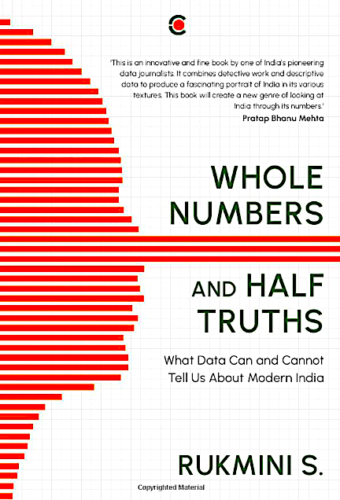 Opinion polls don’t really capture this intersection well. They are not good at capturing people as made up of many parts. We have seen in elections that Hindu upper castes have remained loyal supporters of the BJP even in elections that go against the BJP. I think that’s as clear of a definition of a vote bank as it gets, even though you don’t see that term being used for the Hindu upper caste.
Opinion polls don’t really capture this intersection well. They are not good at capturing people as made up of many parts. We have seen in elections that Hindu upper castes have remained loyal supporters of the BJP even in elections that go against the BJP. I think that’s as clear of a definition of a vote bank as it gets, even though you don’t see that term being used for the Hindu upper caste.
The point I’m making is both numerical as well as one of semantics. In number terms, we should be seeing Hindu upper caste as a vote bank. So let’s consider why we don’t use that word, and then consider what we mean when we use the term vote bank. Let’s accept that we are not using it as a definition or a number category, as we may believe. We are using it as a very loose, perhaps pejorative word.
Can we say when it became pejorative?
I wouldn’t be able to put a time to it. I do feel I systematically see a description of Muslim voters as vote banks and yes you also see it in talk around the delimitation of constituencies. The talk is always that there is a large section of Muslims or scheduled castes in one area or other, and if it is included into the constituency, that means so and so will never win. The demographic analysis shows that the constituency has 20,000 Muslims so you can expect this BJP candidate to lose by 20,000 votes. That is how commonly and loosely it is used.
Two polls suggest riots raise the vote share of the BJP in the subsequent election, you found. The BJP and its Hindutva headline ecosystem propaganda, fear-mongering and outright violence against Muslims could produce some of these unusual caste coalitions as well, you write. Has religious polarisation helped BJP consolidate the Hindu voters?
There has been a lot of thinking about what has brought backward classes and scheduled castes under the BJP umbrella. While Hindu upper castes consistently and systemically vote for the BJP, it isn’t the case that other Hindu castes are not voting for the BJP. There are multiple explanations.
One of the explanations is that the BJP has quite cannily exploited intra-caste group divisions in Uttar Pradesh for example, where particular scheduled caste or OBC groups were being seen as being favoured by a political party that their leaders came from. There was a legitimate grievance. The BJP quite cannily cultivated other groups. This was well borne out by the numbers.
There is also however the question to be asked whether creating this fear around Muslims helps draw Hindu castes together, across caste divisions. Clearly, this is a theory propounded by many political scientists and one of the data points that perhaps lends some weight to this is the one that you mentioned.
A couple of studies have shown that constituencies that see more inter-religious violence are more likely to vote for the BJP. It leads to questions about whether it is in part engineered violence to create a feeling of the outsider that helps other caste groups band together. I honestly think it is a combination of multiple narratives but it explains part of the equation.
While there is a lot of intolerance and casteist behaviour and violence by Hindutva groups against people of marginalised castes, I don’t believe it has the sort of institutional sanction from the top of the Hindu right the way that anti-Muslim violence does.
That, too, has an impact on bringing the groups together when the top leadership and the thought leadership don’t have an institutional antipathy to people from other castes. An important part of the answer is undoubtedly the fact that Narendra Modi comes from a backward class. It is an important part of the BJP appeal, and the value of this representation and what it means to people who have been left out of power and privilege for so long should not be diminished either.
You write that despite 412 seats being technically open to candidates of all castes, both the BJP and Congress have systematically given fewer and fewer tickets to SCs and STs [Scheduled Castes (SCs) and Scheduled Tribes (STs)] in general seats, thereby ghettoising them into reserved seats only. In 2014, just one Dalit (SC) MP ran from a non reserved constituency. In 2019, the ghettoisation was complete. Where does this leave caste-empowerment in politics?
Frankly, it is appalling that we have allowed things to come to this pass where you create reserve seats as you must for a marginalised community that experiences so much hostility that a person would be highly unlikely to get elected in a non-reserved constituency. But no where was the definition that the non-reserved constituency shall not have Dalit representation. The extreme ghettoisation of elected representatives across the board, including the fact that Muslim MPs can really only get elected from a constituency that is overwhelmingly Muslim, is not something that gets talked of enough.
I think this is very far from what constituencies were meant to look like. This is a conversation that is missing from the broader discussion around politics and representation. To me, it seems very shameful. It has come to a place where it is entirely unquestioned.
I’ve written about it a couple of times in the popular media, and the comments and responses have all been what do you mean? We’ve received these seats, and you want even more. We’ve now got to the point where it is even seen as a problem—it’s like you wanted affirmative action, you’ve got it — now don’t ask for anything more. That’s often the pushback I get when I talk about it. I think a lot of political parties have also accepted this.
You found the BJP and Narendra Modi received unprecedented coverage in the media, far outstripping the other political parties. Does this impact the goal of free and fair elections?
Anyone with a working TV will tell you about the absolute dominance of Modi and the BJP and related issues on the nightly news. The first part is the issue of correlation. People who are richer, more urban, Hindi-speaking upper caste people are more likely to have higher media exposure and vote for the BJP.
But I don’t think we have enough research on the media’s impact. Given the tone, tenor, and behaviour of large parts of Indian media that have lost any notion of journalistic integrity and have become mouthpieces for the current government, becoming more loyal than the king in many ways, urgently needs to be studied.
I think many Indians encounter this in their day-to-day lives when they feel their uncles, aunts and parents are being radicalised by the nightly news and worry about it and think about what to do about it. But I believe this is understudied, and it seems like a no-brainer that we need to see the direction of causality, not just the correlation.
Female voter turnout was higher than male turnout for the first time in history in the 2019 general election. How can we explain this?
There are still fewer women registered to vote than men registered to vote. The turnout has improved, but there is still some gap in equality in the number of male and female voters. There has been a stunning increase in female voter turnout in the last 30 years or so. There are a couple of possible explanations but not one conclusive explanation.
Improving the number of women on the rolls was an important aim of the election commission which they pursued, and ensured all women in a household were getting onto the rolls. More was done to encourage women to come out and vote.
I also think the decline in political violence at the time of the election has potentially played a role. One of the things that really affect the ability of the people to vote is mobility. It is a fact that non-permanent movement, whether it is the migration for work or other opportunities where a person is completely uprooting themselves, is much more a male phenomenon.
That does affect male turnout, and since that doesn’t affect female turnout to that extent, it does explain the narrowing of the gap between men and women. Some of it has to do with factors that lower male turnout, and some of it probably has to do with institutional improvements, including a general atmosphere of peace during elections.
India has the highest number of women lawmakers in its history but is still abysmally low regarding female representation in Parliament –148th of 190 countries. Do things like the Congress Party fielding en masse female candidates in the Uttar Pradesh election help?
We have seen more [female] MPs than ever before, but it is extremely low. There is a problem with discussing individual MPs as divorced from party politics, whether for women, men, or anyone.
We are a country where people vote for the party rather than the individual. This reflects both in data around voting decisions and the behaviour of MPs. In elections with a large, clear mandate, as in the last two elections, for example, there is a good case to be made that any candidate put up by the party that ultimately won would have won. A party that was about to do as badly as the Congress did in Uttar Pradesh in 2022 would not be damaged or saved by more women.
This is a tough and important question to ask parties on the ascent when you are going to do well: why don’t you use this as an opportunity to field people from marginalised communities? In that respect, the Trinamool Congress is a better example; it was expected to do well and has continued to stick to its guns in fielding many women candidates.
That’s when it becomes an ideological position held by a party. It is a choice that you make while you are on the ascendance. There is potential to think about the transformational role that reservations in local body elections at the panchayat level and urban local bodies have played in creating two things: one is potentially a cadre of women with some familiarity with politics and then the first step towards moving further in a political career, and creating some amount of familiarity in the minds of voters for the concept of a woman leader.
Is there any evidence to show women are voting for women?
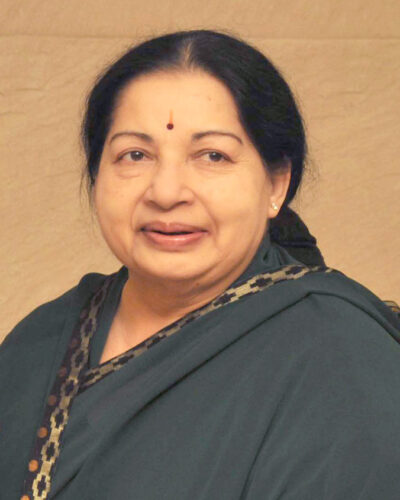
Chief Minister of Tamil Nadu, Ms. J. Jayalalithaa, in Chennai, Tamil Nadu on Aug. 07, 2015. (Prime Minister’s Office)
There is some evidence for this. We don’t see elections in which women make a complete break from the vote of men and vote systematically in a different direction. One good example is Tamil Nadu in which the AIADMK, when the late Jayalalitha led it, was substantially preferred by women voters. The AIADMK enjoyed a substantially higher vote share among women. In the most recent state elections, in which the AIADMK lost, the AIADMK continued to poll better among women than men.
However, when the state made up its mind as it did in this election and voted in large numbers for the DMK which won quite easily, then the vote share for women tilted in favour of the DMK. It isn’t the case that women are voting completely different from men and continue to vote for parties led by women in opposition to all the other forces and processes in the state.
Some regional parties are not led by women but are traditionally seen as being women-friendly and do enjoy an advantage among women voters—the JD(U) in Bihar and the Biju Janata Dal in Orissa are two such parties not led by women but favoured by women.
If BJP did make big gains in its appeal to women, the reasons are not yet clear, you write. Could you explain?
There is a desire to ascribe to women’s vote motivations that have to do with practical things like service delivery schemes. It comes from some evidence, but whether women prefer to vote for things like water and better sanitation remains disputed. Perhaps it comes from a slightly gendered perspective.
There is a sense that if the government provides subsidised cooking cylinders, women will vote for them. I don’t think that lens is necessarily used for male voters. They are ascribed much broader motivations to things like the economy and identity, while motivations are much more narrow for women, and I don’t think that is necessarily from evidence. Some of the analyses in the 2019 election seemed to suggest that women who had benefited from schemes like subsidised cooking fuel were more likely to vote for the BJP.
I don’t think there is direct evidence for this, and I don’t think we have seen evidence that women necessarily vote differently from men or for different reasons.
We never think of voting men as a homogenous block. We slice and dice them on religion, caste, age group, rural and urban, and women must be afforded that same courtesy in political science and political reporting.
Betwa Sharma is the managing editor of Article 14 and the former politics editor at HuffPost India. She has contributed to The New York Times, The Guardian, Foreign Policy, The New Republic, Al Jazeera, Time Magazine and The Inter
The views expressed may or may not reflect those of Consortium News.
Donate Today to CN’s
2022 Fall Fund Drive
Donate securely by credit card or check by clicking the red button:

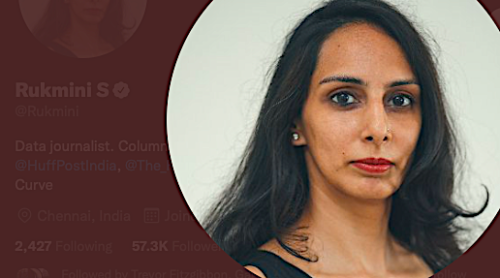
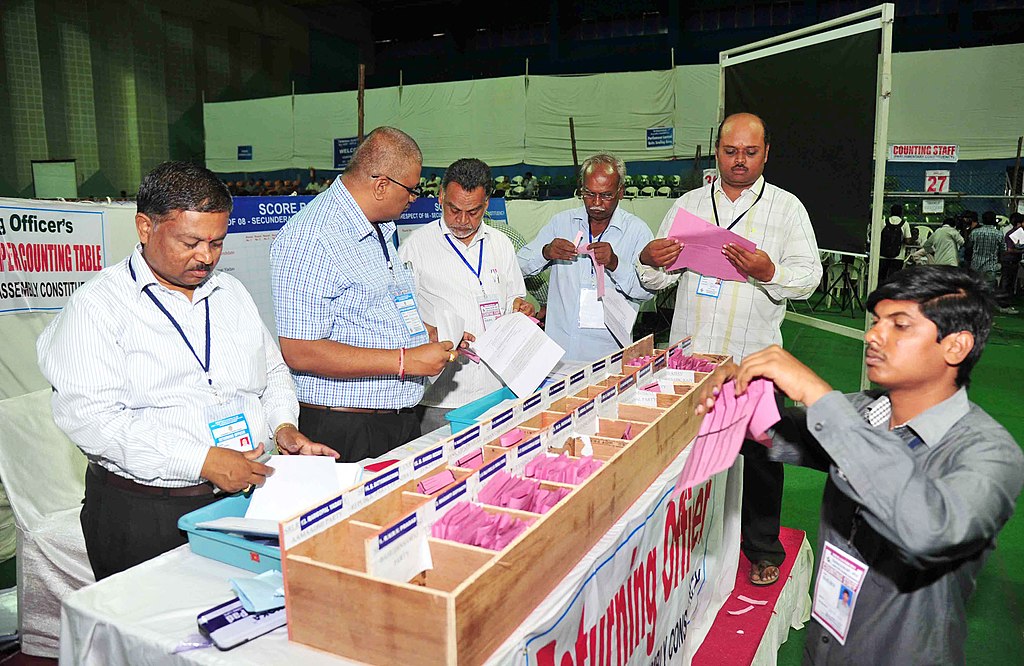
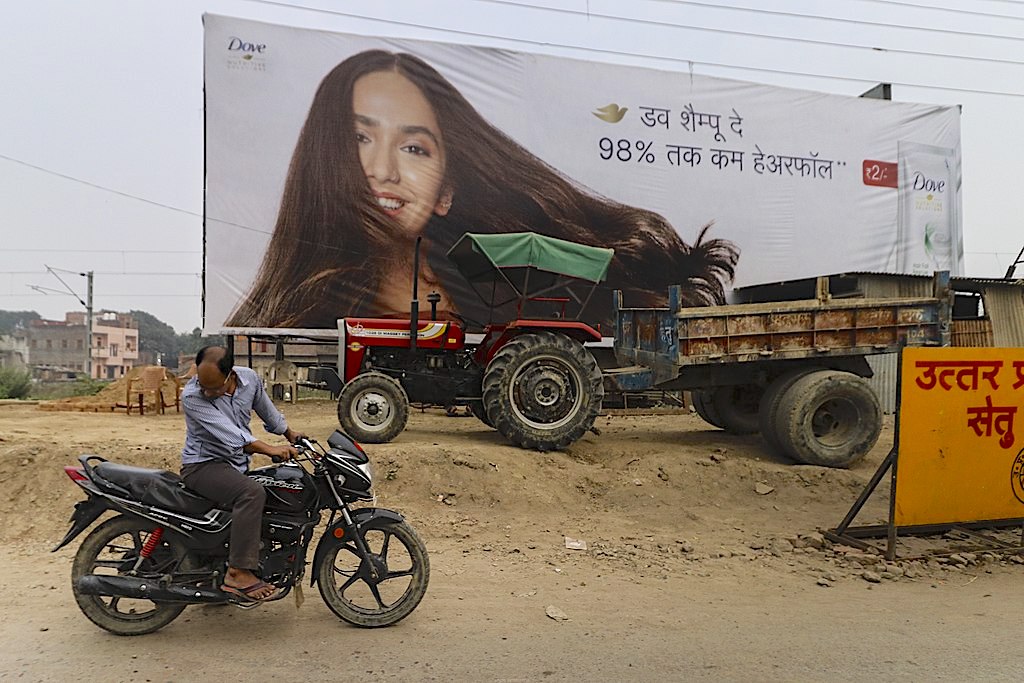


This doesn’t seem to be any different than in the US, where a tiny upper caste/group dominates the media and the political spectrum and manipulates the system to stay on top (e.g. black women as a voting bank). That is simply the functioning of a multicultural society. One has to take into account also that you instinctively identify with your racial/religious group under stress (if only for survival) as can be seen in any US prison. Add to that the example of the willingness of some groups (e.g. Muslims) to look for absolute domination (think ISIS or Taliban) one can understand that peace can only come in a unicultural societies. This is just an outgrowth of evolution amongst mammals. Just as the inferior role of females in the decision making process among mammal herd animals. I am just wondering whether it is ignorance or sheer arrogance that our modern social engineers think they can change genetically imprinted behavior that is the result of Millions of years of evolution within a generation of dindoctrination.
For God’s sake. Now that Alqaeda, ISIS etc are fully exposed to what they actually were – geo-strategic tools in the hands of Western intelligence agencies to destabilise the unfavourable governments – you still use their fear to legitimise anti-Muslim behaviour in India.